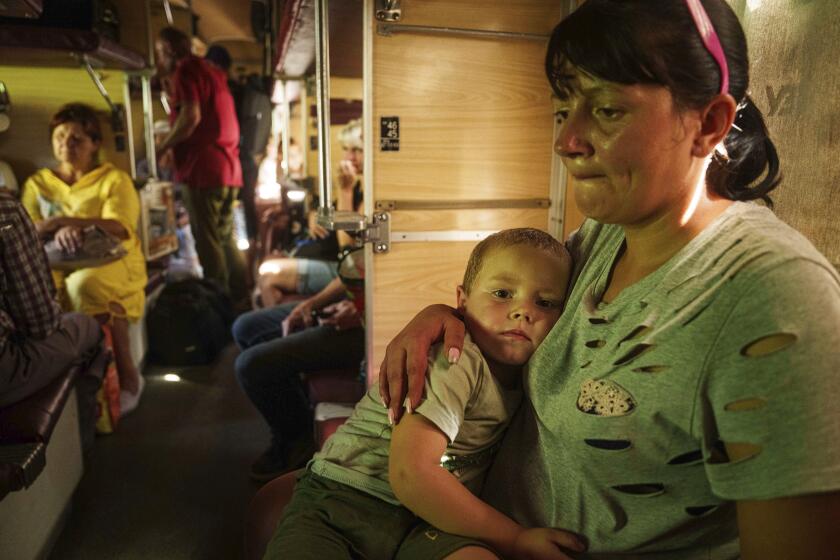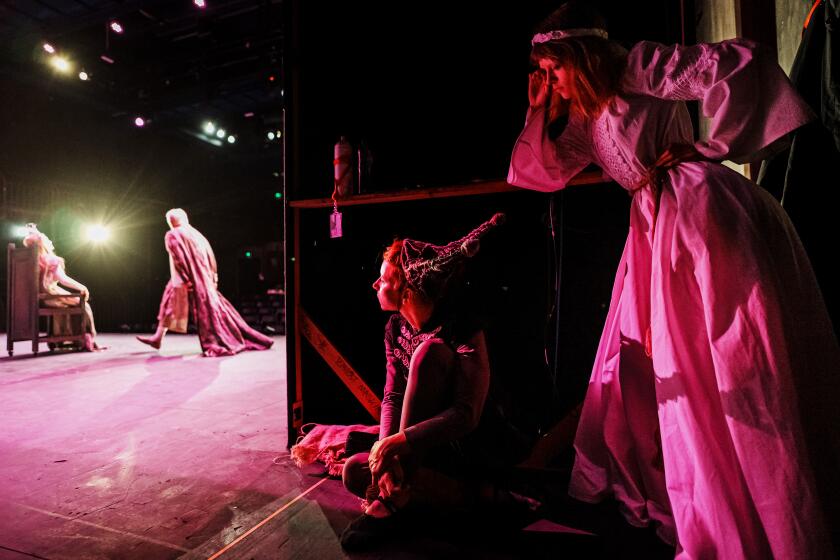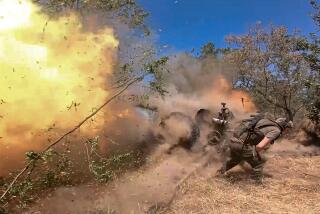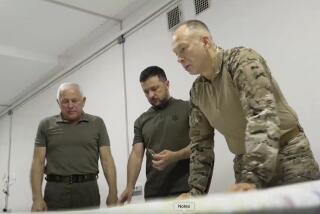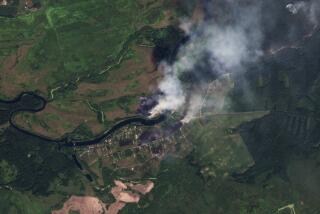Ukraine strikes on bridges could potentially trap Russian troops at border
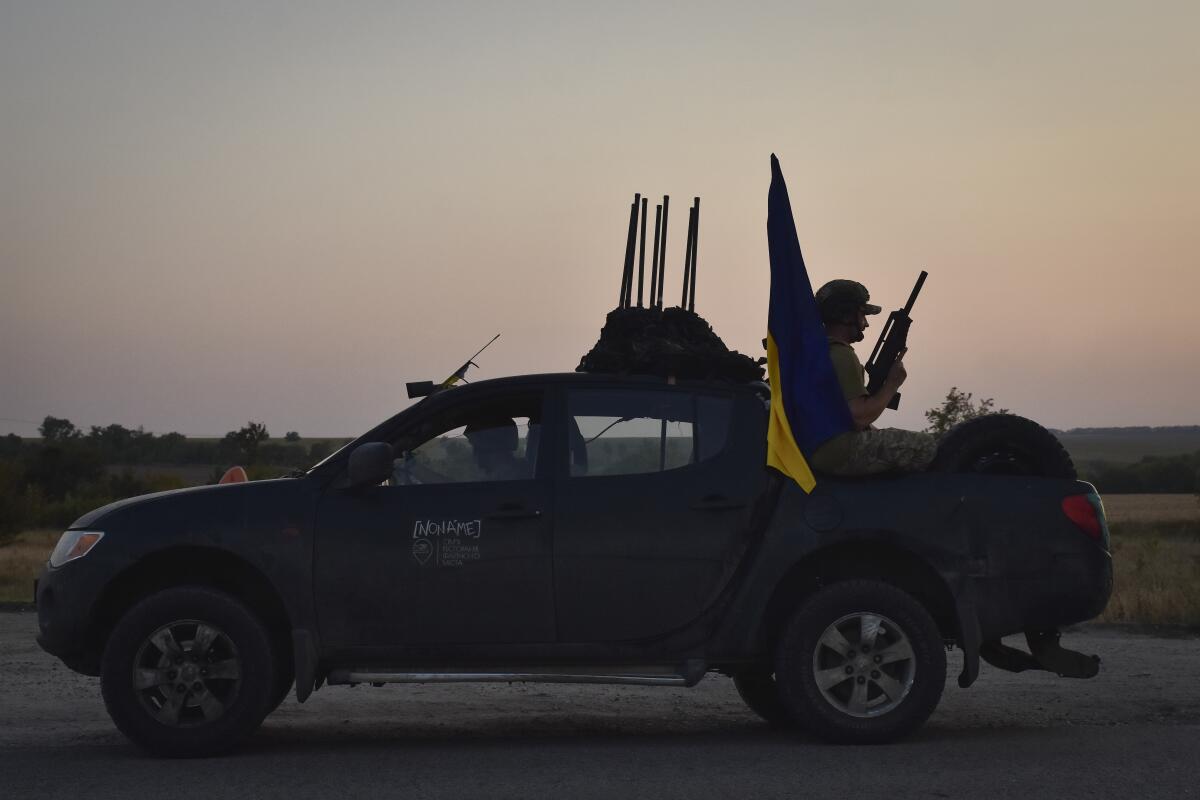
KYIV, Ukraine — Ukrainian forces have either destroyed or damaged all three of the bridges over the Seim River in western Russia, according to Russian sources, as Ukraine’s incursion into western Russia entered its third week Tuesday.
The incursion into Russia’s Kursk region is changing the trajectory of the war and boosting morale among Ukraine‘s war-weary population, though the ultimate outcome of the first attack on Russia since World War II remains impossible to predict.
Even as Ukraine hails its success on Russian territory, the Russian push in eastern Ukraine is poised to claim another key center, the city of Pokrovsk.
Ukraine’s attacks on the three bridges over the Seim River in Kursk could potentially trap Russian forces between the river, Ukrainian troops and the countries’ border. Already they appear to be slowing down Russia’s response to the Kursk incursion, which Ukraine launched Aug. 6.
Civilians lugging children and suitcases are fleeing Ukraine’s key eastern city of Pokrovsk, where the Russian army is bearing down fast.
Over the weekend, Ukraine’s air force commander posted two videos of bridges over the Seim being hit, and satellite photos by Planet Labs PBC analyzed Tuesday by the Associated Press confirmed that a bridge in the town of Glushkovo had been destroyed.
A Russian military investigator confirmed Monday that Ukraine had “totally destroyed” one bridge and damaged two others in the area. The full extent of the damage remained unclear.
“As a result of targeted shelling with the use of rocket and artillery weapons against residential buildings and civilian infrastructure in the Karyzh village ... a third bridge over the Seim River was damaged,” the unnamed representative for Russia’s Investigative Committee said in a video published on the Telegram channel of Russian state TV anchor Vladimir Solovyov.
Russian military bloggers Vladimir Romanov and Yuri Podolyaka and several high-profile pro-war Telegram channels in Russia also reported that the third bridge had been targeted and damaged. Podolyaka’s post was shared by Roman Alekhin, an advisor to Kursk’s acting regional governor.
Since the incursion into the Kursk region began, the Ukrainian army has captured about 490 square miles and 93 settlements, Ukraine’s top military commander said Tuesday — up from 385 square miles a week ago. Gen. Oleksandr Syrskyi made the remarks while meeting with local officials.
After a meeting with Syrskyi later Tuesday, Ukrainian President Volodymyr Zelensky said in a video address that the Ukrainian army was achieving “set goals” in Kursk.
Ukrainians displaced by war find new purpose in Shakespeare’s play of love, loss and madness, bringing their blood-red version to the bard’s hometown.
Zelensky said in recent days that the operation is aimed at creating a buffer zone that can prevent future attacks on his nation from across the border, and that Ukraine is capturing a large number of Russian prisoners of war that it hopes to exchange for captured Ukrainians.
The Russian state news agency Tass reported that 17 people have died and 140 have been injured in Ukraine’s incursion, citing an unnamed source in the Russian medical service. Of 75 people hospitalized, four are children, Tass said.
Russia’s Ministry of Emergency Situations said Tuesday afternoon that more than 500 people had left dangerous areas in the Kursk region over the last 24 hours. In total, more than 122,000 people have been resettled since the Ukrainian attack began, it said.
In another example of Ukraine taking the war to Russian soil, a fire burned for the third consecutive day in the town of Proletarsk after an oil depot was hit by Ukrainian drones.
Ukraine’s General Staff claimed responsibility Sunday for attacking the oil depot, which was used to supply the needs of Russia’s army, calling it a measure “to undermine the military and economic potential of the Russian Federation.”
Russian President Vladimir Putin accused the Ukrainians of “trying to destabilize our country” and compared them to terrorists.
“We will punish the criminals. There can be no doubt about that,” Putin said Tuesday. He was meeting with mothers of children killed in the 2004 Beslan school attack by Islamic militants that left more than 330 people dead.
Ukraine’s incursion has exposed Russian vulnerabilities according to analysts and Ukrainian officials.
Zelensky said Monday that he believes Ukraine’s actions would help to dispel Western fears of offering more robust military aid to Kyiv. Some allies have been handing over weapons slowly and imposing limits on how they can be used, fearing that crossing a Russian “red line” could lead to escalation, even nuclear escalation.
“We have now achieved an extremely important ideological shift: the naive and illusory concept of so-called red lines regarding Russia that dominated the assessments of the war by some of our partners has crumbled these days somewhere near Sudzha,” the president said, referring to a seized Russian town under Ukrainian control.
Much remains unknown about Ukrainian operations in Russia but satellite images provide some clues.
Pontoon bridges — temporary bridges used by militaries when formal bridges are blown up — could be seen in the satellite images provide by Planet Labs PBC in two different positions along the Seim River in recent days. The pontoons likely were built by Russian troops trying to supply forces around the Ukrainian advance.
Meanwhile along the front line in eastern Ukraine, Russia continued to bear down on the city of Pokrovsk, one of Ukraine’s main defensive strongholds and a key logistics hub in the Donetsk region, forcing Kyiv’s forces to pull back and Ukrainian civilians to flee their homes. Its capture would compromise Ukraine’s defensive abilities and supply routes and would bring Russia closer to its stated aim of capturing the entire Donetsk region.
Russia’s relentless six-month slog across the region after the capture of Avdiivka has cost both sides heavily in troops and armor. Russia wants control of all parts of Donetsk and neighboring Luhansk, which together make up the Donbas industrial region.
Novikov writes for the Associated Press. AP writer Jon Gambrell contributed.
More to Read
Sign up for Essential California
The most important California stories and recommendations in your inbox every morning.
You may occasionally receive promotional content from the Los Angeles Times.
